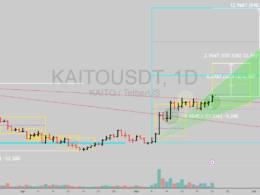In the vast and highly liquid $26 trillion Treasury market, where government debt takes center stage, a trade known as the “basis trade” has been drawing attention as year-end approaches. This unique trade strategy aims to capitalize on the price discrepancies between Treasurys and Treasury futures. While these differences may seem insignificant, the use of leverage can amplify potential gains or losses.
Understanding the Basis Trade
At its core, the basis trade hinges on arbitrage opportunities. It involves leveraging and financing through borrowing in the repo market while simultaneously assuming a short position in Treasury futures and a long position in Treasury cash. By taking advantage of the price gaps between the two, traders can profit from the premiums typically seen in futures contracts compared to cash Treasurys.
Strengthening Oversight: The SEC’s Intervention
The Securities and Exchange Commission (SEC), under the leadership of Gary Gensler, is now striving to enhance oversight in this area. In a recent move, the SEC voted to mandate the use of a clearinghouse for repurchase agreement transactions. This intermediary entity acts as a facilitator, reducing systemic risks associated with such trades.
Recognizing Risks and Market Instability
In August, the Federal Reserve’s staff alerted market participants to the need for vigilant monitoring of hedge funds’ leveraged Treasury trades. They also highlighted how unwinding these trades likely contributed to the market turbulence witnessed in March 2020. Shortly afterward, strategist Steven Zeng of Deutsche Bank echoed these concerns, raising questions about the potential consequences of rapid unwinding of basis trades.
The Present Landscape and Potential Scenarios
Despite the prevailing environment of high U.S. interest rates, the use of the basis trade persists. However, experts suggest that any rapid unwinding of positions would most likely occur as a result of forced selling by specific firms rather than being driven solely by market conditions.
As regulators continue to emphasize oversight, the basis trade remains a focus within the Treasury market. Traders and investors alike are closely monitoring developments to mitigate risks and seize opportunities in this dynamic landscape.
The basis trade in U.S. government bonds has recently come under scrutiny from regulatory bodies such as the SEC and Fed Reserve. Analysts like Ben Emons, senior portfolio manager and head of fixed income at NewEdge Wealth, have observed that these trades are highly leveraged and require careful monitoring. The SEC’s new central-clearing requirement may play a significant role in the potential unwinding of this trade, as it aims to mitigate risks associated with it.
Despite concerns raised about the basis trade, the Committee on Capital Markets Regulation, backed by the financial industry, suggests that worries may be overblown. They argue that trading activity related to the basis trade is currently below the peak levels seen in 2019-2020, relative to outstanding Treasury debt.
Ken Griffin, the head of Citadel, a major investment fund, believes that regulators should focus on banks rather than hedge funds when addressing risks stemming from arbitrage trading of U.S. government bonds.
Rostin Behnam, chairman of the Commodity Futures Trading Commission, has dismissed media coverage of the basis trade as “breathless.” He emphasizes that the sizes of the futures and cash markets for Treasurys align with historical patterns.
Bloomberg recently identified several firms with traders highly involved in the basis trade. Notably, Citadel, Tudor Investment Corp., Balyasny Asset Management, and Kedalion Capital Management were among those identified. However, these firms declined to comment on their involvement.
Other firms mentioned by Bloomberg, including ExodusPoint Capital Management, Millennium Management, Capula Investment Management, and Symmetry Investments, did not respond to comment requests.
During Friday’s pre-holiday shortened session, Treasury yields remained relatively stable throughout the day.






